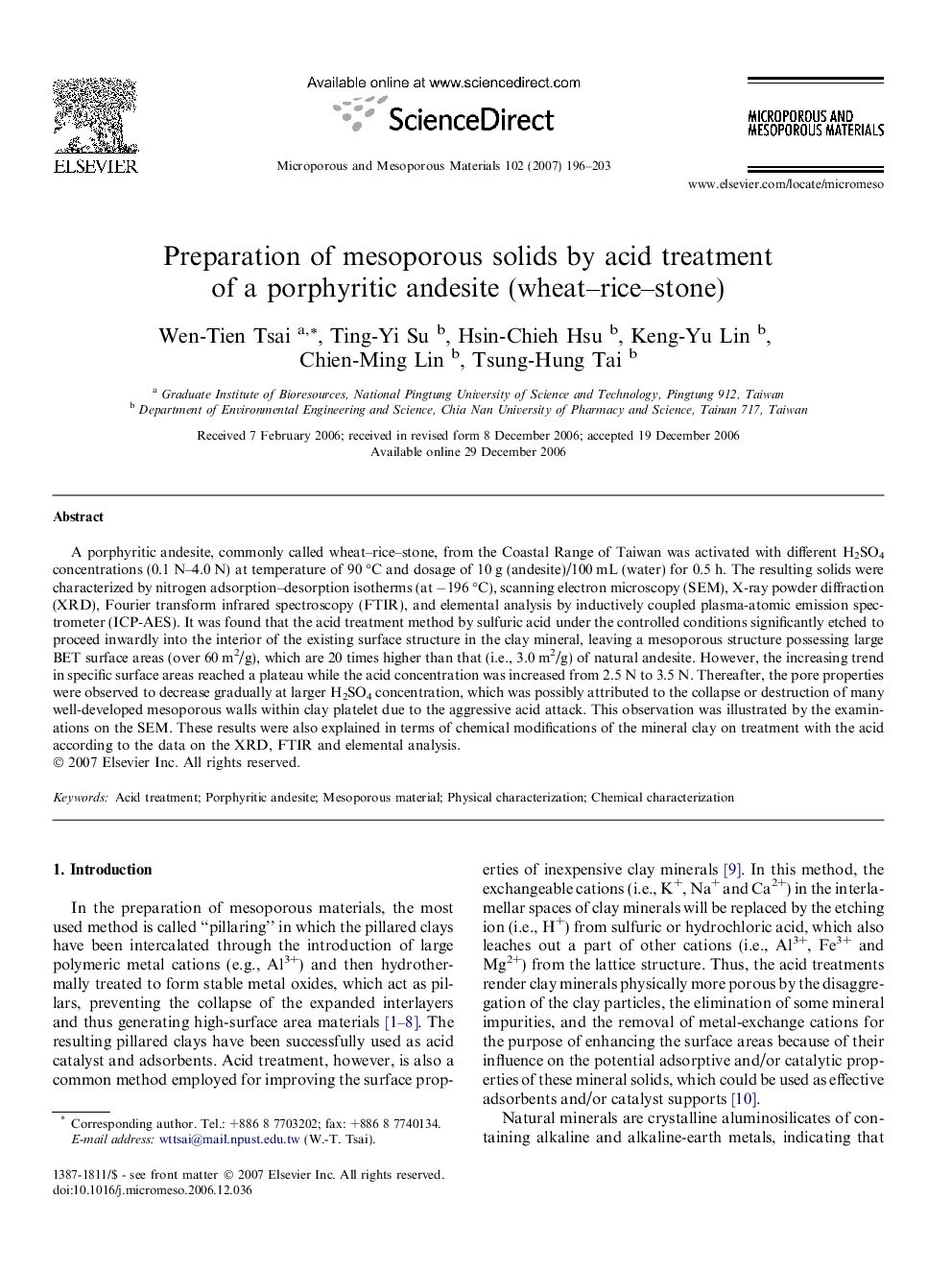| کد مقاله | کد نشریه | سال انتشار | مقاله انگلیسی | نسخه تمام متن |
|---|---|---|---|---|
| 76279 | 49136 | 2007 | 8 صفحه PDF | دانلود رایگان |

A porphyritic andesite, commonly called wheat–rice–stone, from the Coastal Range of Taiwan was activated with different H2SO4 concentrations (0.1 N–4.0 N) at temperature of 90 °C and dosage of 10 g (andesite)/100 mL (water) for 0.5 h. The resulting solids were characterized by nitrogen adsorption–desorption isotherms (at −196 °C), scanning electron microscopy (SEM), X-ray powder diffraction (XRD), Fourier transform infrared spectroscopy (FTIR), and elemental analysis by inductively coupled plasma-atomic emission spectrometer (ICP-AES). It was found that the acid treatment method by sulfuric acid under the controlled conditions significantly etched to proceed inwardly into the interior of the existing surface structure in the clay mineral, leaving a mesoporous structure possessing large BET surface areas (over 60 m2/g), which are 20 times higher than that (i.e., 3.0 m2/g) of natural andesite. However, the increasing trend in specific surface areas reached a plateau while the acid concentration was increased from 2.5 N to 3.5 N. Thereafter, the pore properties were observed to decrease gradually at larger H2SO4 concentration, which was possibly attributed to the collapse or destruction of many well-developed mesoporous walls within clay platelet due to the aggressive acid attack. This observation was illustrated by the examinations on the SEM. These results were also explained in terms of chemical modifications of the mineral clay on treatment with the acid according to the data on the XRD, FTIR and elemental analysis.
Journal: Microporous and Mesoporous Materials - Volume 102, Issues 1–3, 4 May 2007, Pages 196–203